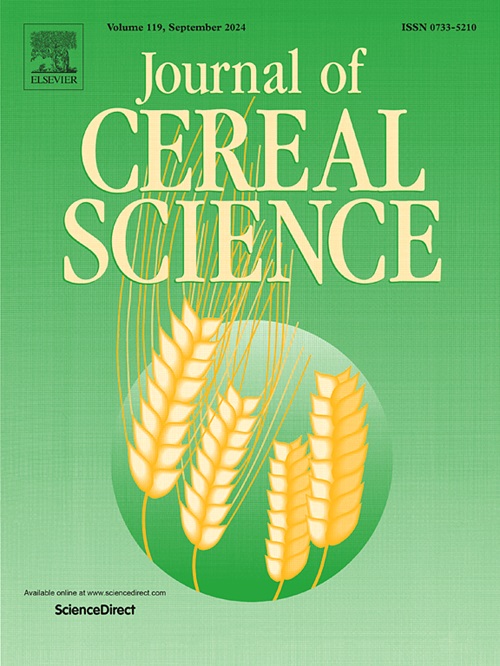鹰嘴豆水豆浆对米面包的改良
IF 3.7
2区 农林科学
Q2 FOOD SCIENCE & TECHNOLOGY
引用次数: 0
摘要
尽管目前的兴趣和趋势,无麸质面包,如米面包不能达到相同的面包体积和理想的质地特征,因为他们的小麦同类。Aquafaba (AQ)是烹饪豆类产生的富含蛋白质的废水,其中鹰嘴豆是研究最广泛的,作为一种新的清洁原料,它有望提高烘焙产品的质量。选用直链淀粉含量不同的四种水稻品种:星谷(HO)、Mizuhochikara (MZ)、日光(HI)和乳白皇后(MQ)制作米面包。在面包配方中,水被0%、50%和100% (w/w)的水aba泡沫代替。Aquafaba的应用增加了由HI, MZ和HO制成的样品的体积。没有检测到MQ样本的差异。随着AQ含量的增加,面包屑结构更开放,细胞更大。用AQ取代的HO、MZ和HI样品在分析的3天内硬度值显著降低。直链淀粉含量较高的品种在添加AQ后硬度差异较大,但并非所有样品在添加50%和100% AQ后硬度差异均不显著。综上所述,即使添加50% AQ,也能显著影响米面包的条形体积和质地特征。本文章由计算机程序翻译,如有差异,请以英文原文为准。

Improvement of rice bread by the addition of chickpea aquafaba
Despite current interests and trends, gluten-free breads such as rice breads cannot achieve the same loaf volumes and desirable textural characteristics as their wheat counterparts. Aquafaba (AQ), protein-rich wastewater from cooking legumes, with chickpeas being the most widely studied, shows promise for enhancing bakery product quality as a novel clean ingredient. Rice bread was prepared using four rice varieties chosen due to their varying amylose contents: Hoshiyutaka (HO), Mizuhochikara (MZ), Hinohikari (HI), and Milky Queen (MQ). In the bread formulation, water was substituted with aquafaba foam at 0 %, 50 %, and 100 % (w/w). Aquafaba application increased the loaf volume in samples made from HI, MZ, and HO. No differences were detected for MQ samples. With the increase in the AQ percentage, bread samples exhibited a more open crumb structure, characterized by larger cells. HO, MZ, and HI samples with AQ substitution showed significantly lower hardness values throughout the 3 days analyzed. Higher amylose cultivars showed larger hardness differences with the application of AQ. Not all samples displayed significant differences between 50 % and 100 % AQ. In conclusion, AQ can positively impact rice bread's loaf volume and textural characteristics even with a 50 % substitution.
求助全文
通过发布文献求助,成功后即可免费获取论文全文。
去求助
来源期刊

Journal of Cereal Science
工程技术-食品科技
CiteScore
7.80
自引率
2.60%
发文量
163
审稿时长
38 days
期刊介绍:
The Journal of Cereal Science was established in 1983 to provide an International forum for the publication of original research papers of high standing covering all aspects of cereal science related to the functional and nutritional quality of cereal grains (true cereals - members of the Poaceae family and starchy pseudocereals - members of the Amaranthaceae, Chenopodiaceae and Polygonaceae families) and their products, in relation to the cereals used. The journal also publishes concise and critical review articles appraising the status and future directions of specific areas of cereal science and short communications that present news of important advances in research. The journal aims at topicality and at providing comprehensive coverage of progress in the field.
 求助内容:
求助内容: 应助结果提醒方式:
应助结果提醒方式:


